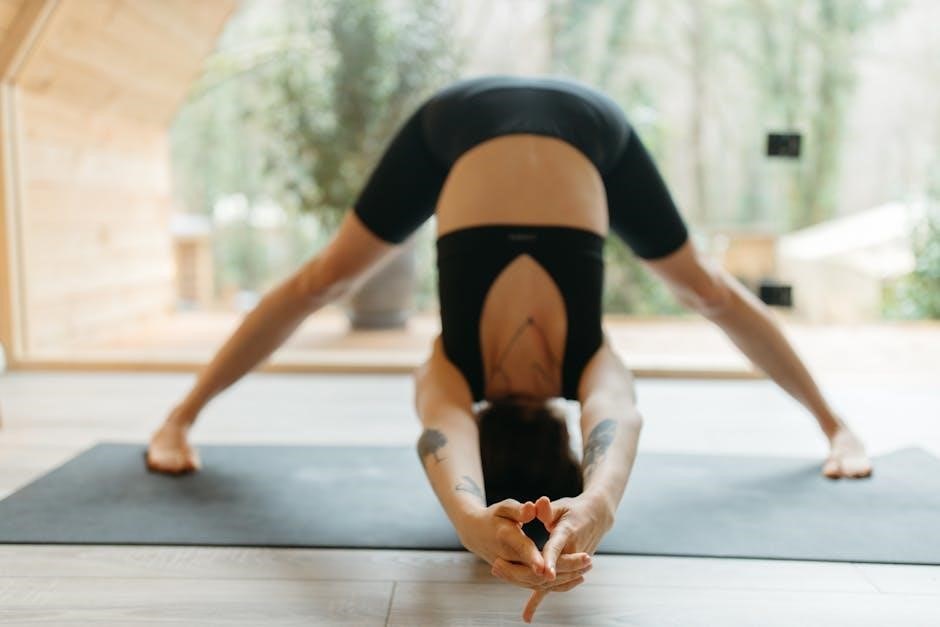
3 day push pull legs workout routine pdf
The 3-Day Push/Pull/Legs workout routine offers a balanced and efficient approach to building strength and muscle, ideal for individuals of all fitness levels, promoting overall fitness and muscular development effectively.
Overview of the Push/Pull/Legs (PPL) Split
The Push/Pull/Legs (PPL) split divides workouts into three categories: pushing muscles (chest, shoulders, triceps), pulling muscles (back, biceps, rear delts), and legs (quads, hamstrings, calves, core). This 3-day routine targets each muscle group separately, allowing for focused intensity and recovery. It’s a popular choice for its efficiency, as it ensures balanced development across the entire body. The split is versatile, catering to both beginners and advanced lifters, and can be adapted to various fitness goals, whether strength, hypertrophy, or overall conditioning. By dedicating one day to each category, the PPL split maximizes training efficiency while minimizing overlap, making it an ideal framework for consistent progress and muscle growth.
Why Choose a 3-Day Workout Routine?
A 3-day workout routine is an excellent choice for individuals seeking a balance between training and recovery. It allows for sufficient frequency to stimulate muscle growth while providing adequate rest days for recovery. This schedule is particularly beneficial for those with busy lifestyles, as it requires less time commitment compared to higher-frequency programs. The 3-day PPL split ensures each major muscle group is targeted, promoting overall development and strength gains. Additionally, it offers flexibility, catering to both beginners and advanced lifters, making it a versatile option for various fitness goals. By optimizing time and effort, a 3-day routine supports consistency and sustainability, key factors in achieving long-term success in fitness.
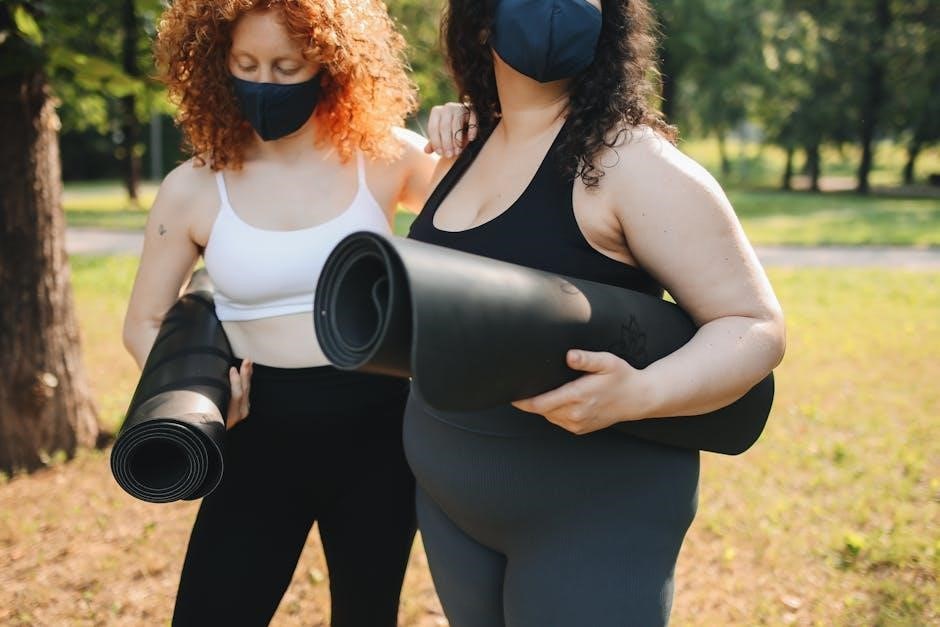
Benefits of the Push/Pull/Legs Routine
The Push/Pull/Legs routine enhances muscle growth, strength, and overall fitness efficiently, perfect for all fitness levels, offering balanced development and time-effective training for busy schedules.
Improved Muscle Growth and Strength
The Push/Pull/Legs routine is designed to maximize muscle growth and strength by targeting specific muscle groups. Each day focuses on either pushing, pulling, or legs, allowing for intense workouts. This split ensures that each muscle group is trained thoroughly, promoting significant hypertrophy and strength gains. By dedicating entire days to pushing muscles like chest and shoulders, pulling muscles like back and biceps, and legs, the routine ensures balanced development. Progressive overload is emphasized, enabling lifters to gradually increase weights and reps, leading to continuous improvement. This structured approach makes it an effective choice for both beginners and advanced trainees seeking consistent progress and muscle growth.
Time Efficiency for Busy Schedules
The 3-Day Push/Pull/Legs routine is ideal for individuals with busy schedules, offering a structured yet concise workout plan. By dedicating three days to specific muscle groups, it eliminates the need for lengthy gym sessions. Each day focuses on a distinct category—pushing, pulling, or legs—ensuring efficient targeting of muscles. This split allows for optimal recovery time between sessions, making it sustainable for those with limited availability. The routine is designed to maximize results in minimal time, providing a clear and focused approach to fitness. Its simplicity makes it easy to follow, even for those balancing work, family, or other commitments, while still delivering significant progress in strength and muscle development.
Suitable for All Fitness Levels
The 3-Day Push/Pull/Legs routine is designed to accommodate individuals at every fitness level, from beginners to advanced lifters. Its structured yet flexible approach allows for easy customization, making it accessible to those just starting their fitness journey while still challenging enough for experienced athletes. Each workout day focuses on specific muscle groups, enabling gradual progression and adaptation. The routine’s simplicity and clarity ensure that everyone can follow along, regardless of prior experience. Whether the goal is to build muscle, increase strength, or improve overall fitness, this split provides a balanced and comprehensive framework for achieving success. Its adaptability ensures that it remains effective as fitness levels evolve over time, making it a sustainable choice for long-term growth and development.

Structure of the 3-Day Push/Pull/Legs Routine
The routine divides workouts into three focused days: Push (chest, shoulders, triceps), Pull (back, lats, biceps), and Legs (lower body and core), ensuring balanced development and recovery.
Day 1: Push Day (Upper Body Pushing Muscles)
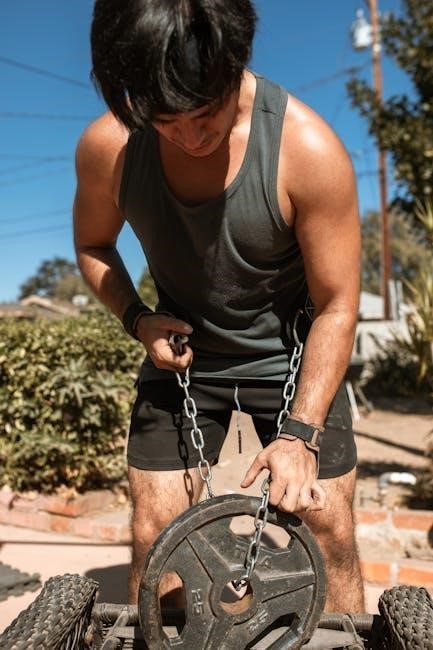
Push Day targets the upper body muscles responsible for pushing movements, such as the chest, shoulders, and triceps. This day typically begins with compound exercises like the bench press or overhead press, which work multiple muscle groups simultaneously. These exercises are foundational for building strength and muscle mass. Following the compound movements, isolation exercises like tricep pushdowns or lateral raises are included to target specific areas, ensuring balanced development. The structure of Push Day is designed to maximize hypertrophy and strength gains, while also improving overall upper body aesthetics. Proper form and progression are key to avoiding injury and achieving desired results. This focused approach ensures efficient and effective workouts tailored to individual goals.
Day 2: Pull Day (Upper Body Pulling Muscles)
Day 2 focuses on the upper body pulling muscles, primarily targeting the back, lats, biceps, and rear delts. This day typically begins with compound exercises such as pull-ups, rows, or lat pulldowns, which are essential for building strength and muscle mass in the back and lats. Isolation exercises like bicep curls or face pulls are then incorporated to specifically target the biceps and rear delts, ensuring balanced development. Proper form and progressive overload are crucial to maximize gains and prevent injury. This structured approach ensures that all pulling muscles are effectively stimulated, promoting a strong and aesthetically pleasing upper body. Consistency and attention to detail are key to achieving the desired results from this workout day.
Day 3: Legs Day (Lower Body and Core)
Day 3 is dedicated to the lower body and core, focusing on compound exercises like squats, deadlifts, and lunges to target the quads, hamstrings, and glutes. These exercises are foundational for building overall leg strength and muscle mass. Isolation exercises such as leg curls, calf raises, and leg extensions are also included to ensure balanced development of the lower body. Core workouts, including planks and Russian twists, are incorporated to improve stability and overall athleticism. Proper form and consistency are essential to maximize results and prevent injury. This day rounds out the routine, ensuring comprehensive development of the entire body. It’s a critical component for achieving a well-rounded physique and functional strength.
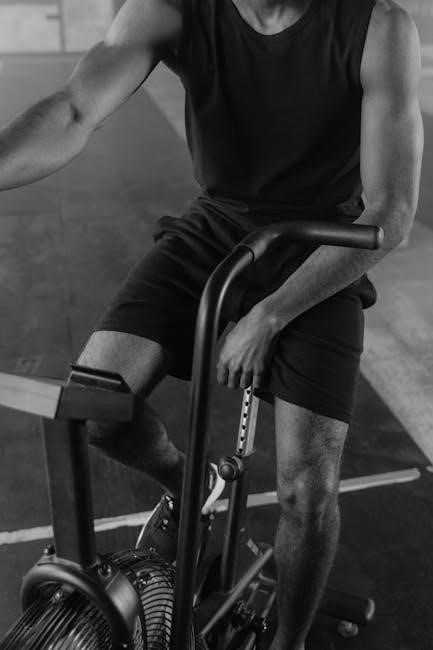
Day 1: Push Day Workout
Push Day focuses on upper body pushing muscles, including chest, shoulders, and triceps, with compound exercises like bench presses and overhead presses for strength and muscle growth.
Compound Exercises for Chest and Shoulders
Compound exercises like bench presses and overhead presses are foundational for chest and shoulder development. Start with the flat barbell bench press to target the chest and shoulders. Incline bench presses can emphasize the upper chest, while dumbbell bench presses allow for greater range of motion. Overhead barbell presses and seated dumbbell shoulder presses effectively engage the deltoids. These exercises work multiple muscle groups simultaneously, maximizing efficiency and promoting balanced growth. Focus on proper form to prevent injury and ensure full engagement of target muscles. Gradually increase weight to challenge muscles and stimulate progress over time. These compound movements are essential for building a strong, aesthetic upper body. Consistency and progressive overload are key to achieving desired results.
Isolation Exercises for Triceps and Shoulders
Isolation exercises for triceps and shoulders include tricep pushdowns, overhead dumbbell extensions, and cable lateral raises. Tricep pushdowns target the triceps, enhancing arm definition and strength. Overhead dumbbell extensions isolate the triceps while engaging the shoulders. Cable lateral raises specifically target the deltoids, improving shoulder width and aesthetics. These exercises help address muscle imbalances and refine muscle definition. They are performed with lighter weights and higher reps to focus on the target muscles. Incorporating these isolation exercises ensures comprehensive development of the triceps and shoulders, complementing the compound movements. Proper form and controlled movements are crucial to maximize effectiveness and prevent injury. These exercises are essential for a well-rounded push day workout. Consistency and progressive overload will yield noticeable improvements over time.
Day 2: Pull Day Workout
Day 2 focuses on pulling muscles, targeting back, lats, biceps, and rear delts with exercises like pull-ups, rows, lat pulldowns, and curls for muscle growth and strength.
Compound Exercises for Back and Lats
Compound exercises for back and lats are essential for building strength and muscle mass. Pull-ups, deadlifts, and bent-over rows are foundational movements that target multiple muscle groups simultaneously. Pull-ups work the lats, rhomboids, and biceps, while deadlifts engage the entire back, glutes, and hamstrings. Bent-over rows focus on the upper back, lats, and rear delts. These exercises promote functional strength and muscle development. Incorporating variations like lat pulldowns or rack pulls can further enhance lat engagement. Consistency and progressive overload are key to maximizing gains in back and lat development, ensuring a strong, balanced upper body. These compound lifts form the backbone of an effective pull day workout routine.
Isolation Exercises for Biceps and Rear Delts
Isolation exercises for biceps and rear delts are crucial for targeted muscle development. Bicep curls, hammer curls, and concentration curls effectively isolate the biceps, promoting size and definition. For rear delts, exercises like lateral raises, face pulls, and reverse pec deck flyes are ideal for targeting this often-neglected muscle group. These movements help enhance shoulder stability and overall upper body aesthetics. Incorporating variations, such as cable curls or incline dumbbell curls, can further stimulate growth. Rear delt flyes with ropes or cables also provide a unique challenge. Balancing isolation work with compound exercises ensures well-rounded development and prevents muscle imbalances. Consistency and proper form are key to maximizing results from these exercises.
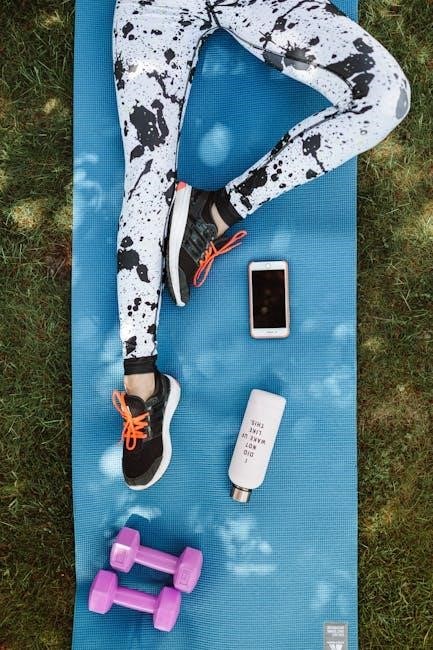
Day 3: Legs Day Workout
Day 3 focuses on legs and core, combining compound exercises like squats and deadlifts with isolation movements for calves and core muscles to ensure comprehensive development.
Compound Exercises for Quads and Hamstrings
Compound exercises like squats, deadlifts, and lunges are foundational for building strong quads and hamstrings. Squats target the quadriceps, glutes, and core, while deadlifts engage the hamstrings, glutes, and lower back. Lunges improve balance and work both quads and hamstrings effectively. These exercises promote significant muscle growth and functional strength, making them essential in the push/pull/legs routine. Incorporating progressive overload and maintaining proper form are key to maximizing gains and avoiding injury. By consistently performing these exercises, individuals can achieve well-developed legs and enhanced overall athleticism. They are versatile and can be adapted to different fitness levels, ensuring a challenging workout for both beginners and advanced lifters.
Isolation Exercises for Calves and Core
Isolation exercises for calves and core are crucial for targeting smaller muscle groups that are often overlooked. Calf raises, both standing and seated, effectively isolate the gastrocnemius and soleus muscles, enhancing lower leg development. For the core, exercises like planks, crunches, and leg raises focus on the abs, obliques, and lower back, improving stability and definition. These exercises complement compound movements by addressing muscle imbalances and enhancing overall athleticism. Incorporating calf raises with varying weights and rep ranges ensures comprehensive calf development, while core exercises improve posture and functional strength. Consistent training of these areas ensures a well-rounded physique and supports overall performance in other lifts. Balancing isolation work with compound exercises is key for a balanced leg day routine.
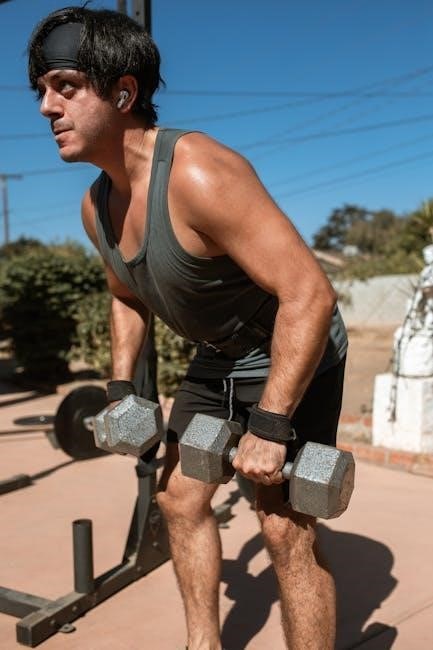
Tips for Maximizing Gains
Combine progressive overload with consistency, ensuring proper form to avoid injury and enhance muscle engagement. Recovery and nutrition are key to optimize results and support growth effectively.
Progressive Overload and Consistency
Progressive overload is crucial for continuous muscle growth. Gradually increase weight or reps each week to challenge muscles. Consistency ensures long-term gains, making it essential to stick to the routine. Over time, this approach builds strength and muscle effectively. It keeps workouts engaging and prevents plateaus, promoting steady progress. By focusing on incremental improvements, lifters can achieve their fitness goals more efficiently. This method is proven to work across all fitness levels, ensuring adaptation and growth. It’s a cornerstone of successful training plans, fostering discipline and dedication for optimal results in the 3-day PPL routine.
Proper Form and Recovery Techniques
Maintaining proper form during exercises is essential to prevent injuries and ensure muscles are targeted effectively. Focus on controlled movements and avoid sacrificing technique for heavier weights. Recovery is equally important, as muscles grow during rest. Incorporate stretching, foam rolling, and massage to enhance flexibility and reduce muscle soreness. Adequate sleep and active recovery, such as light cardio or yoga, support overall muscle repair. Prioritizing form and recovery helps maximize gains while minimizing the risk of injury, making it a cornerstone of a successful 3-day PPL routine. Consistent attention to these details ensures sustainable progress and long-term success in strength and muscle development.

Recovery Strategies
Rest days are crucial for muscle repair and recovery in a 3-day Push/Pull/Legs routine, ensuring optimal progress and preventing overtraining. Allowing your body to heal supports overall recovery.
Importance of Rest Days
Rest days are essential for muscle recovery and growth in a 3-Day Push/Pull/Legs routine. They allow your muscles to repair and rebuild, preventing overtraining and injury. Without adequate rest, progress stalls, and performance declines. Incorporating rest days ensures you return stronger and more focused for your next workout. Proper recovery also enhances overall physical and mental well-being, making it a cornerstone of any effective training plan.
Role of Sleep in Muscle Recovery
Sleep plays a crucial role in muscle recovery, as it is during rest that your body repairs and grows muscle tissue. Deep sleep stages, particularly REM sleep, are vital for muscle recovery, as hormones like growth hormone are released to aid in tissue repair. Aim for 7-9 hours of quality sleep per night to support muscle growth and recovery. Poor sleep quality can hinder recovery, reduce performance, and slow progress in your 3-Day Push/Pull/Legs routine. Prioritizing sleep ensures your body is prepared for the next workout, making it a cornerstone of any effective training plan.
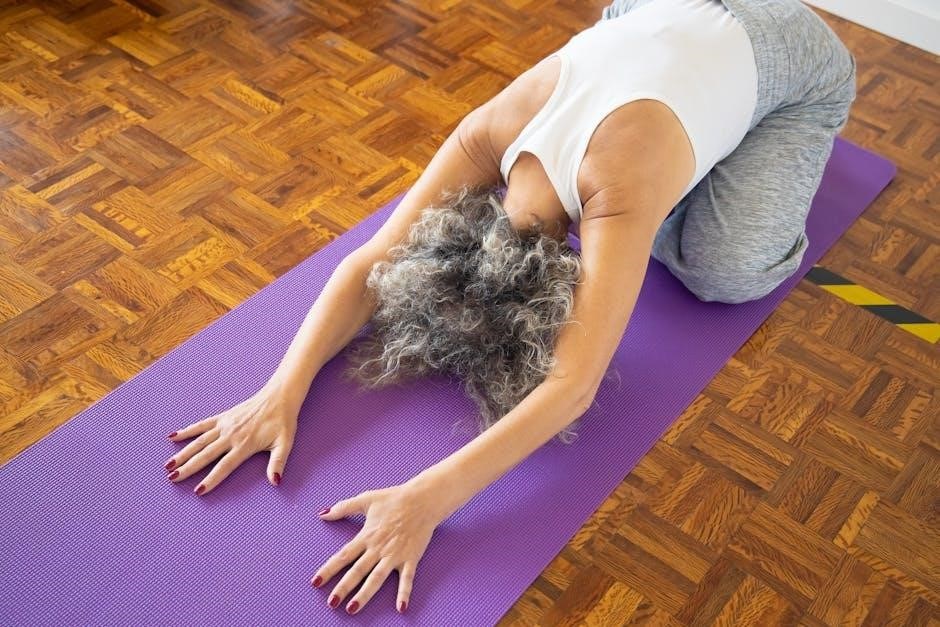
Nutrition and Supplementation
Proper nutrition fuels workouts and recovery. A balanced diet with sufficient protein, carbs, and fats is essential. Supplements like whey protein and creatine can enhance muscle growth and performance.
Balanced Diet for Muscle Growth
A well-structured diet is crucial for muscle growth and recovery in a 3-Day Push/Pull/Legs routine. Aim for a caloric surplus with adequate protein (1.2-2.2g per kg of body weight) to support muscle synthesis. Carbohydrates provide energy for workouts, while healthy fats aid hormone production. Include lean proteins like chicken, fish, and eggs, complex carbs such as brown rice and oats, and essential fats from sources like avocados and nuts. Meal timing around workouts can optimize performance and recovery. Staying hydrated is also vital to maintain muscle function and overall health during intense training phases.
Supplements to Support Recovery
Supplements can enhance recovery and performance in a 3-Day Push/Pull/Legs routine. Protein powder is essential for muscle repair and growth, especially post-workout. Creatine boosts strength and endurance, while BCAAs (branched-chain amino acids) reduce muscle soreness. L-Glutamine supports muscle recovery and gut health. Fish oil, rich in omega-3s, reduces inflammation. Multivitamins fill nutritional gaps, ensuring optimal health. Pre-workout supplements with caffeine and beta-alanine can improve focus and endurance. Timing supplements correctly, such as taking protein and BCAAs post-workout, maximizes recovery. Always choose high-quality products and consult a professional for personalized advice. Supplements should complement, not replace, a balanced diet and consistent training regimen for best results.
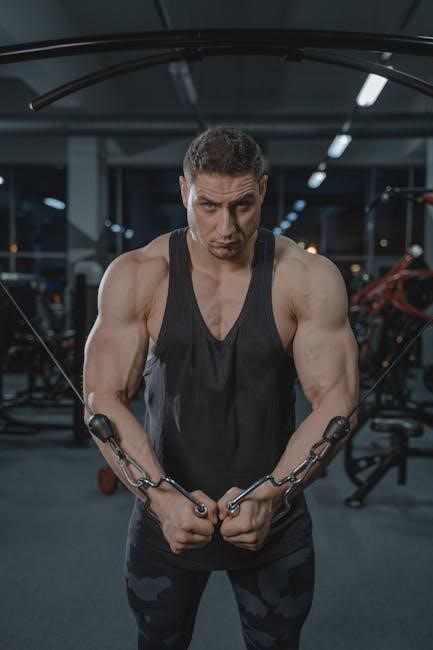
Sample 3-Day Push/Pull/Legs Routine PDF Template
A customizable 3-Day Push/Pull/Legs workout plan with exercises, sets, and reps, designed to track progress and adapt to individual fitness goals effectively and efficiently.
Customizable Workout Plan
A customizable 3-Day Push/Pull/Legs workout plan allows individuals to tailor exercises, sets, and reps to meet personal fitness goals. This flexibility ensures the routine remains effective for all levels, whether beginner or advanced. Users can adjust exercise selections based on equipment availability or target specific muscle groups for balanced development. The plan also accommodates variations in recovery time and intensity preferences. By providing structured yet adaptable workouts, the template helps maintain consistency while allowing for progress tracking and adjustments. This approach ensures sustained motivation and continuous improvement, making it a versatile tool for achieving strength and muscle growth objectives efficiently.
Tracking Progress and Adjustments
Tracking progress is essential to ensure the effectiveness of the 3-Day Push/Pull/Legs workout routine. By logging exercises, weights, and repetitions, individuals can monitor improvements over time. Regularly assessing strength gains and muscle development helps identify areas needing adjustment. Adjustments may include increasing weights, adding reps, or modifying exercises to challenge muscles further. Progress tracking also helps maintain motivation and accountability. Over time, this data-driven approach allows for fine-tuning the workout plan to align with evolving fitness goals. Consistent effort and periodic evaluations ensure the routine remains challenging and effective, promoting long-term success in building strength and muscle.

